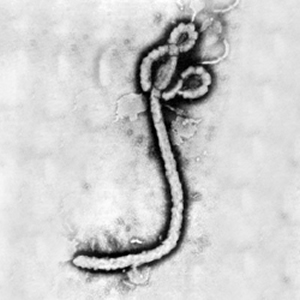Clostridium as a Cancer Therapy
Clostridium is one of the largest prokaryotic genera and consists of a diverse range of obligatory anaerobic bacteria. Most of these bacteria are flagellated and motile. These bacteria are Gram-positive and rod-shaped, and capable of forming endospores. Clostridium bacteria can undergo a complex cell differentiation process that produces endospores that are highly resistant to harsh environmental conditions and can withstand high temperature, disinfectants, and low-energy radiation. The genus includes common free-living bacteria and pathogens. Several pathogens producing potent toxins are part of this genera including C. tetani, C. botulinum, C. difficile, and C. perfringens. C. tetani and C. botulinum are both well-studied species linked to human diseases and are potent bacterial toxins. C. tetani is the causative agent of tetanus, and Clostridium botulinum is related to food poisoning and causes botulism. Other members of the Clostridium genus include Clostridium perfringens which can infect wounds and cause gas gangrene, and Clostridium difficile, which grows in the gut during antibiotic therapy to cause pseudomembranous enterocolitis. Recently, Clostridium novyi type A has been associated with an outbreak of serious illness and death amongst intravenous drug users. However, most Clostridium species are nonpathogenic. Many are harmless and can be found in the soil. Some species have applications in bioremediation and wastewater treatment. Nonpathogenic species include the industrially valuable Clostridium acetobutylicum and Clostridium beijerinckii. These solventogenic clostridia are used in acetone, butanol and isopropanol fermentation.
Anticancer Properties
Clostridium’s anaerobic nature and ability to form resistive spores make it an ideal candidate for cancer therapy and anticancer treatment. Recently, advances have been made in cancer therapy and treatment using Clostridium bacteria. Although conventional anticancer therapies such as surgical resection, radiotherapy, and chemotherapy have proven effective, alternative techniques are being developed to increase efficiency against a wider range of cancer cases, to increase specificity of such therapies, to improve current techniques, and to minimize side effects. Experimental cancer treatments are medical therapies intended to treat cancer by improving, supplementing or replacing current conventional methods. A proposed option for treatment of avascular or hypoxic regions of tumors has been the use of anaerobic bacteria such as Clostridium. Some clostridia show innate oncolytic activity based on their specificity to germinate in the hypoxic and necrotic regions of solid tumors. Clostridium spores are selective and can only germinate within the hypoxic and necrotic regions of the tumors. Combined with their ability to produce spores, intravenous administration of spores from nonpathogenic strains of Clostridia will lead to spores that only germinate in the hypoxic areas of solid cancer tumors. As a result, this specificity can be used to target cancerous tumors marked by uncontrolled growth and low oxygen levels that can provide a niche for anaerobic bacteria such as Clostridium. With Clostridium-directed tumor therapy, advantages include tumor selectivity and safety of using nonpathogenic clostridia in cancer treatment.
At right is a sample image insertion. It works for any image uploaded anywhere to MicrobeWiki. The insertion code consists of:
Double brackets: [[
Filename: Ebola virus 1.jpeg
Thumbnail status: |thumb|
Pixel size: |300px|
Placement on page: |right|
Legend/credit: Electron micrograph of the Ebola Zaire virus. This was the first photo ever taken of the virus, on 10/13/1976. By Dr. F.A. Murphy, now at U.C. Davis, then at the CDC.
Closed double brackets: ]]
Other examples:
Bold
Italic
Subscript: H2O
Superscript: Fe3+
Overall paper length should be 3,000 words, with at least 3 figures with data.
Section 2
Include some current research in each topic, with at least one figure showing data.
Section 3
Include some current research in each topic, with at least one figure showing data.
Further Reading
[Sample link] Ebola Hemorrhagic Fever—Centers for Disease Control and Prevention, Special Pathogens Branch
References
Edited by Anh Tran, a student of Nora Sullivan in BIOL168L (Microbiology) in The Keck Science Department of the Claremont Colleges Spring 2014.

